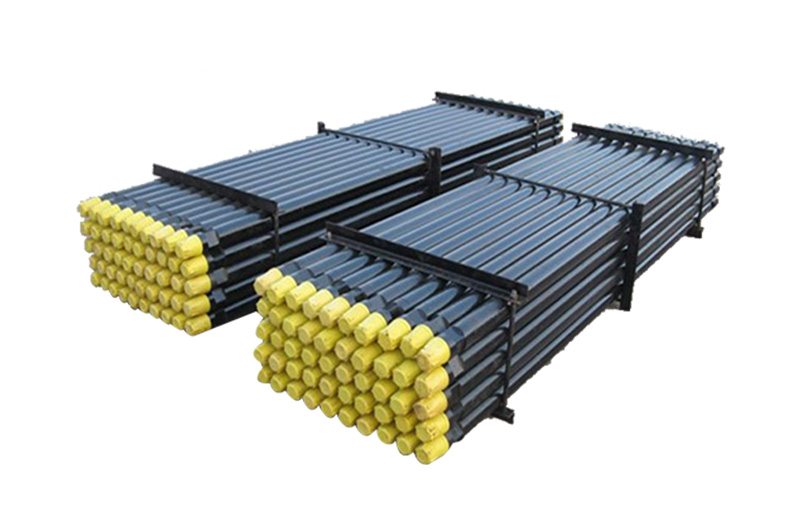Jun. 06, 2024
Introduction
DTH (Down-the-Hole) drilling is a method used primarily for drilling hard rock and is widely used in various industries such as mining, construction, and oil and gas. Central to this method is the DTH drill pipe, a specialized tool designed to deliver power and precision during the drilling process. This article delves into what a DTH drill pipe is, its components, and its applications.
What is a DTH Drill Pipe?
A DTH drill pipe is a steel pipe used in DTH drilling rigs to transmit rotary torque and feed force from the rig to the drill bit. It forms the primary connection between the DTH hammer and the drilling rig, playing a crucial role in the drilling process. The pipe is designed to withstand high pressure and stress, ensuring efficient and effective drilling.
Components of DTH Drill Pipe
1. Pipe Body: The main section of the drill pipe, usually made from high-strength alloy steel to withstand the rigors of drilling.
2. Tool Joints: These are the threaded connections at both ends of the drill pipe, allowing it to be connected to other pipes or drilling equipment. Tool joints are typically heat-treated to enhance their strength and durability.
3. Inner Tube: Inside the pipe body, the inner tube facilitates the passage of compressed air to the DTH hammer. This air is essential for the operation of the hammer and the removal of cuttings from the borehole.
4. Thread Protectors: These are used to protect the threads of the tool joints from damage during transportation and handling.
How DTH Drill Pipe Works
The DTH drilling process involves the following steps:
1. Rotation: The drill rig imparts rotary motion to the drill pipe, which is transferred to the DTH hammer and drill bit.
2. Percussion: Compressed air is sent down through the inner tube of the drill pipe to the DTH hammer, causing it to strike the drill bit repeatedly.
3. Cuttings Removal: The same compressed air used to power the hammer also helps in lifting the rock cuttings to the surface, clearing the borehole.

Applications of DTH Drill Pipe
1. Mining: DTH drilling is extensively used in the mining industry for blast hole drilling. The precision and efficiency of DTH drilling make it ideal for creating holes for explosives in hard rock formations.
2. Construction: In construction, DTH drilling is employed for foundation work, such as drilling boreholes for piles, anchors, and micro-piles. The ability to drill straight, deep holes in hard substrates is crucial for these applications.
3. Oil and Gas Exploration: DTH drilling is used in oil and gas exploration, particularly for shallow gas wells and geothermal wells. The method's ability to maintain borehole integrity and drill through hard rock makes it suitable for these applications.
4. Water Well Drilling: DTH drilling is a preferred method for water well drilling, especially in regions with hard rock geology. It provides an efficient way to reach deep aquifers and ensures a reliable water supply.
5. Geothermal Drilling: The drilling of geothermal wells often requires penetrating hard, crystalline rock formations. DTH drilling is effective in these conditions, making it a common choice for geothermal energy projects.
6. Quarrying: In quarries, DTH drilling is used to drill holes for blasting, enabling the extraction of large volumes of stone and aggregate efficiently.
Advantages of Using DTH Drill Pipe
1. High Penetration Rate: The combination of rotary and percussive actions allows
for high drilling speeds, making the DTH method highly efficient in hard rock formations.
2. Straight Holes: The design of the DTH system ensures that the holes drilled are straight and true, which is crucial for applications requiring precise boreholes, such as in construction and mining.
3. Versatility: DTH drilling can be used in a wide range of applications, from shallow to deep holes and in various rock types, providing a versatile solution for many industries.
4. Durability: DTH drill pipes are built to withstand the harsh conditions of drilling in hard rock, including high pressure and mechanical stress, which ensures a long service life and reliability.
5. Efficient Cuttings Removal: The use of compressed air to remove cuttings helps keep the borehole clean and reduces downtime, improving overall drilling efficiency.
Conclusion
DTH drill pipes play a vital role in the efficiency and effectiveness of the DTH drilling method. Their robust construction and ability to transmit both rotary and percussive forces make them indispensable in industries such as mining, construction, oil and gas exploration, water well drilling, geothermal energy, and quarrying. By understanding the components, working principles, and applications of DTH drill pipes, professionals in these fields can make informed decisions to optimize their drilling operations and achieve better results.
Previous: Industrial Scrap Metal Shredder: Hydraulic vs Electric - Which is Better?
Next: Comprehensive Guide to Setting Up a Household Gloves Production Line
If you are interested in sending in a Guest Blogger Submission,welcome to write for us!
All Comments ( 0 )